How Phoenix radio made Bruce Springsteen the Boss: He 'just kind of shot through the roof'
- Oops!Something went wrong.Please try again later.
Bruce Springsteen was still working toward a mainstream breakthrough that could live up to the promise of his critical acclaim when he found the Celebrity Theatre packed with fans who knew his first two albums for the hits they were in Phoenix, thanks to the DJs at KDKB-FM, a free-form progressive rock station that was making this a breakout market for the scruffy New Dylan from Freehold, New Jersey.
As Linda Thompson Smith, a KDKB DJ at the time, recalls, “We were all over that first album. And not that many stations were. But we were playing ‘Blinded By the Light,’ ‘Growin’ Up,' ‘For You,’ ‘Spirit in the Night’ and ‘It’s Hard to Be a Saint in the City.’ Everybody at the station loved him so much.”
It was March 24, 1974, and Springsteen was touring at the helm of a ragtag assortment of brilliant musicians who would soon be dubbed the E Street Band in support of “The Wild, the Innocent & the E Street Shuffle,” a landmark second album that, like his first release, “Greetings From Asbury Park, N.J.,” didn't make the Billboard album charts.
Both albums charted later, after the success of “Born to Run.”
Springsteen on the Celebrity Theatre: 'We don’t sell out a place this size ever'
There’s a backstage interview on Soundcloud from that sold-out show at the Celebrity, which has a capacity of 2,650, in which Springsteen is talking to reporters from the Phoenix New Times and Arizona State University’s student paper, the State Press.
“I don’t know why in the hell we got so popular in this one particular spot,” he says. “We don’t sell out a place this size ever. We sell a dinky 27,000 albums.”
According to setlist.fm, his set that night included "Wild Billy's Circus Story," "New York City Serenade," "Spirit in the Night," "The E Street Shuffle," "4th of July, Asbury Park (Sandy)," Rufus Thomas’ "Walking the Dog,” “Kitty's Back,” “It's Hard to Be a Saint in the City,” “For You,” “Rosalita (Come Out Tonight)” and the R&B classic “Twist and Shout.”
'He was ready to headline': Billy Joel fans remember his 1st Phoenix concerts
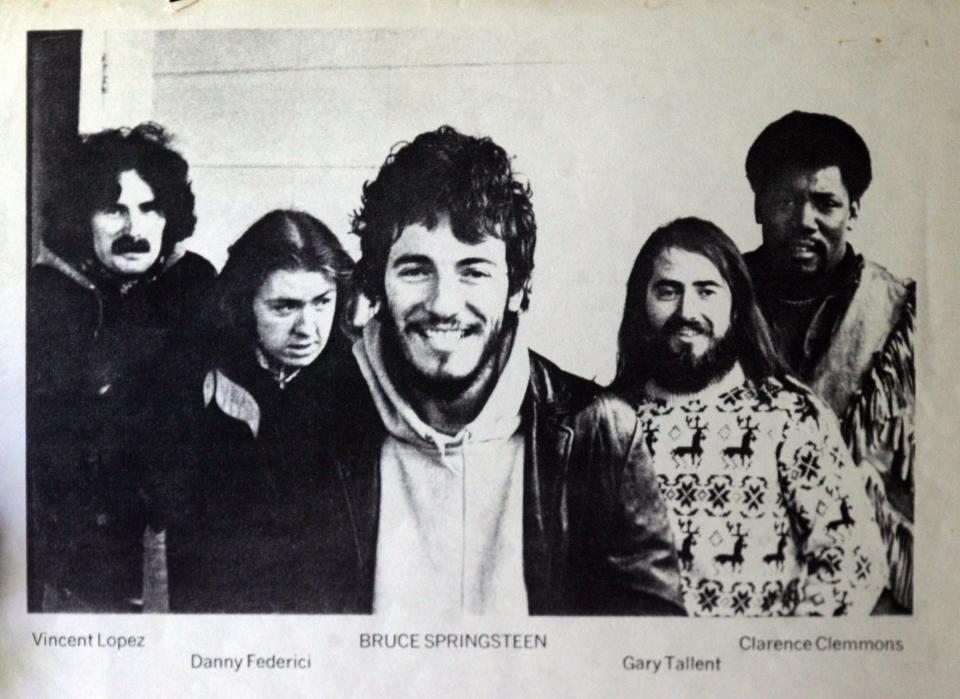
Springsteen's 1st Phoenix concert: 'A very physical performance'
What Thompson Smith remembers most about that show is “just the energy and the response,” she says.
“It was a very physical performance. And the band was so much fun to watch. They were energized and it really translated to the audience. It was one of those experiences where you walk away going, ‘Wow, that was one the best shows I have ever seen.’ And you could see them getting better really quickly. They just kind of shot through the roof in a lot of ways.”
By that point, it was obvious to Thompson Smith that she was witnessing an icon in the making.
“We knew on that one,” she says. “We called it.”
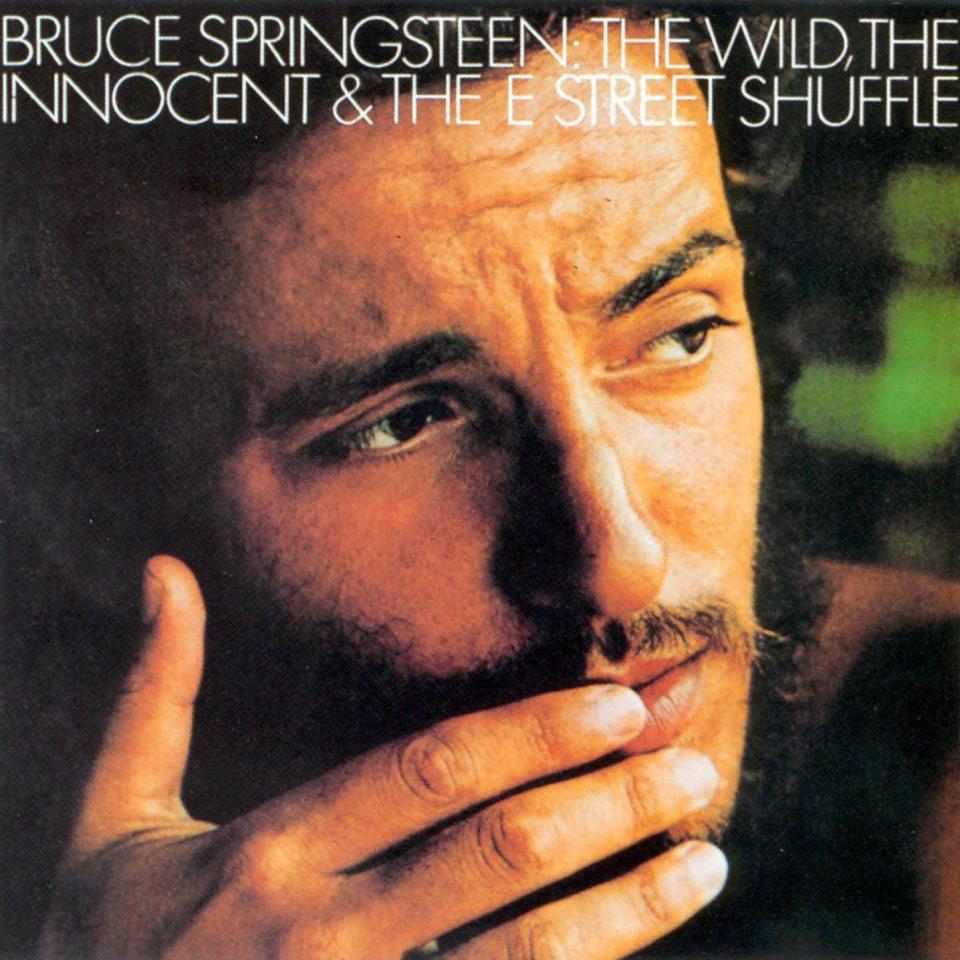
Springsteen's 2nd Celebrity Theatre concert tickets cost $4.75
Springsteen returned to the Celebrity on Saturday, July 27, 1974, with Danny O’Keefe in the opening slot, for two performances, at 7:30 and 11 p.m.
Tickets cost $4.75.
In a review of “The Wild, the Innocent & the E Street Shuffle” that ran in The Arizona Republic as a preview, Gus Walker wrote, “This man Springsteen is rapidly becoming the darling of Phoenix’s progressive rock radio station. Cuts from his new album can be heard so constantly that the station is sounding akin to top-40. Springsteen will be at the Celebrity Theater Saturday, his second appearance in six months, and he has been hailed by some as the new Bob Dylan.”
Danny Zelisko, a Valley concert promoter for the past five decades who started bringing Springsteen through town in the ‘80s, credits KDKB and program director Bill Compton with the size and feverish enthusiasm of the audiences Springsteen commanded here before his mainstream breakthrough.
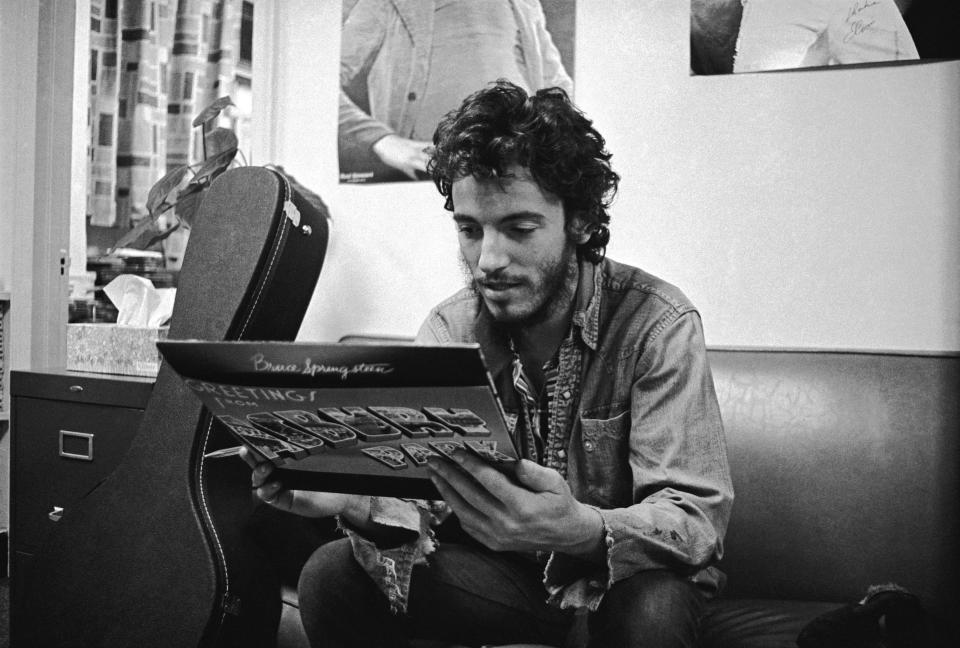
"Bill and KDKB singlehandedly broke Bruce Springsteen here," Zelisko says.
"They were playing the first record. Then, the second record. I mean, take whoever the top spin-getter has been in the last month here on any kind of radio format and multiply that by 10. That’s how often Bruce got played here. And they played every song on both records, which is unheard of. That’s why he rose to such prominence here in such a short time.”
Thompson Smith says the DJs at KDKB were drawn to that first album by the strength of the material.
“But the audience responded very quickly, and the sales were there in the record stores,” she says. “So everybody was happy. CBS was happy and they got us what we needed to promote him. They were grateful. Because those first two albums, there wasn’t national response on them everywhere. But I would say that Bruce was in pretty high rotation from Day 1 because there was such a response to it and we all loved it.”
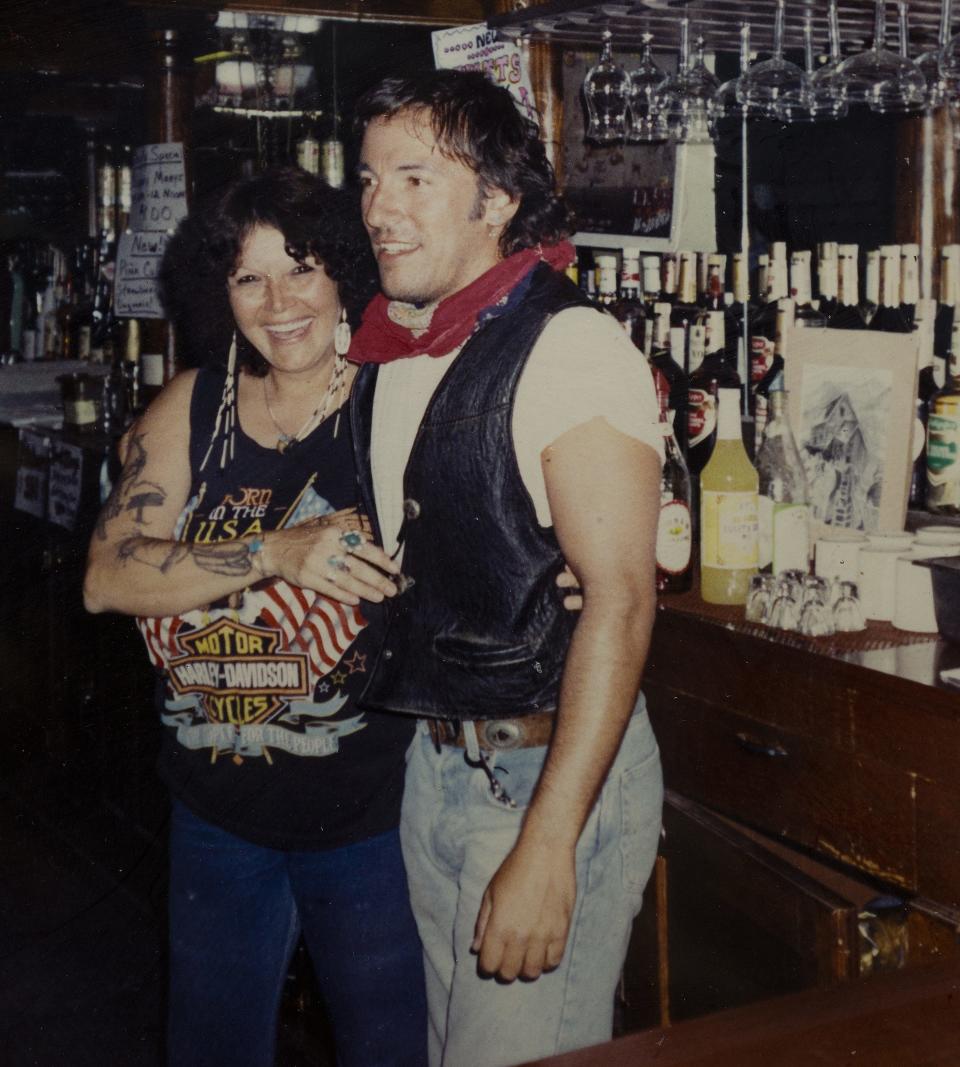
Danny Zelisko says 2nd Springsteen Celebrity show was 'bedlam'
Zelisko says that second show at the Celebrity was “bedlam.”
In a good way.
“He just destroyed the place,” Zelisko says. “The stage was turning. I thought he would jump right off the stage. Because back in the day, Bruce could jump pretty damn high. But it was just bedlam.
"He had such a high-energy audience that he was performing at a Mach 10 level. When all you see are smiling faces, people sweating and dancing, crushing into each other, jumping up and down, I mean, you had no choice but to jump right in and really live a little.”
Joe Catanzaro was in high school at the time.
“It was one of the best shows I have ever seen,” he says. “I couldn’t believe how good he was. He only had the two albums out. But he did ‘Jungleland’ as one of the encores. I think he came out with five encores if my memory serves me well. But it was just amazing how much energy he had. It was nonstop. It felt like watching Jagger in his heyday, jumping around all over the place. He was such a great performer.”
Catanzaro and his friends had been turned on to Springsteen through constant rotation on KDKB.
“At that point, it was just Phoenix and New Jersey that really knew of him, it seemed like,” Catanzaro says. “So we were fortunate. It was before he really took off. But he was huge in Phoenix.”
Steve Adams had trouble believing he was seeing Springsteen's second concert of the night.
“He did two shows that night and I went to the second show, which started probably 10:30, 11 o’clock,” he says.
“So he had already done his first show. Well, the one I went to, my goodness, it went on for, like, two-and-a-half, three hours, nonstop, way beyond the amount of time that was expected. The intensity of that show and the amount of time he played, we were all so impressed with not only his music and his uniqueness but the effort that he put into the show.”
Adams’ favorite memories of that show include performances of “Blinded By the Light,” “Growin’ Up,” “For You,” “It’s Hard to Be a Saint in the City,” “Spirit in the Night” and “4th of July, Asbury Park (Sandy).”
But “Rosalita” was the highlight among highlights.
“That was probably the biggest song of that show, just the intensity of it,” Adams says. “The place went nuts.”
![A photograph taken by Barry Schneier of Bruce Springsteen performing, "For You," on May 9, 1974 at the Harvard Square Theatre in Cambridge. [Photo courtesy of Barry Schneier]](https://s.yimg.com/ny/api/res/1.2/lBfOu9ImK6i17C7rCADuXg--/YXBwaWQ9aGlnaGxhbmRlcjt3PTk2MDtoPTYwNQ--/https://media.zenfs.com/en/azcentral-the-arizona-republic/791ebfe5115cc23fb5eab5a2c876ac38)
3 nights at Gammage Auditorium on 'Born to Run' tour
It took three nights to meet the demand for tickets when Springsteen arrived at Gammage Auditorium in late 1975 on the “Born to Run” tour, playing Nov. 3, 4 and 6.
In a column announcing the three-night stand in The Republic, Hardy Price, the paper's music columnist, wrote, “Springsteen says he doesn’t like working in the round and thus the exit from Celebrity.”
The shows at Gammage were promoted by the Boss’ manager, Mike Appel, through the Associated Students of Arizona State University.
Price was on hand for the first of those three concerts, giving Springsteen his first proper concert review in The Republic under the headline “Springsteen wild on stage.”
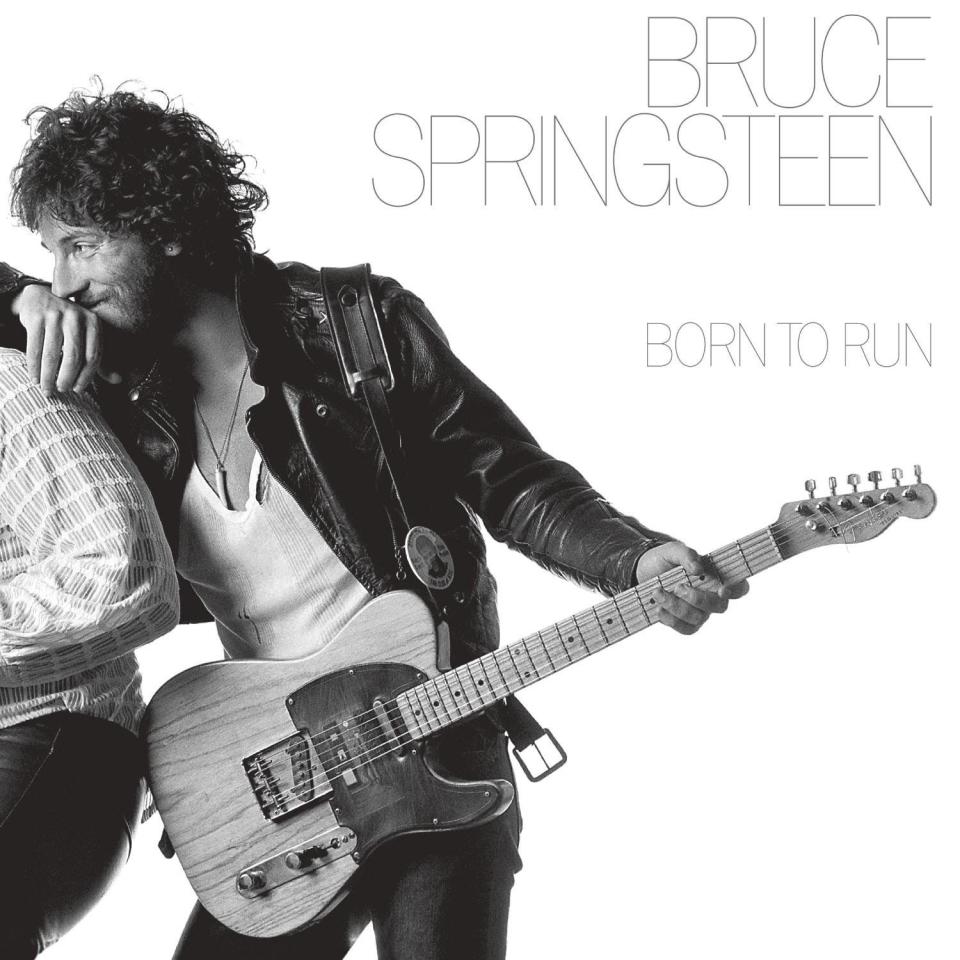
The Republic on Springsteen's energy level: 'At times overwhelming'
“The august interior of Arizona State University’s Gammage Auditorium was turned into a rock and roll madhouse Monday night by the current darling of the pop music scene, Bruce Springsteen,” Price began.
“Springsteen and his E Street Band commanded the stage at Gammage with a force and energy level that was at times overwhelming.”
According to Price, “The self-admitted rock and roll street punk from Freehold, N.J., carried on nonstop for almost three hours before a near-capacity audience of more than 3,000.”
Noting that people had compared the rising star to Elvis Presley and Bob Dylan, Price wrote, “The 26-year-old Springsteen has been acclaimed the new king of rock and roll with his picture on the cover of both Time and Newsweek in the same week. But when one gets down to the nitty-gritty, Springsteen’s music, be it an opening “Thunder-road” or a midway “Born to Run,” is straight-ahead rock and roll with a heavy accent on the rhythm section and Clarence Clemons’ blaring saxophone.”
What separated Springsteen from the other young contenders for the crown, Price figured, was “his sheer on-stage intensity.”
As Price wrote, “He attacks not only the microphone but throws his blue-jeaned, white T-shirt and black leather jacket-clad body around the stage with an abandon exceeded only by Joe Cocker or Peter Wolf.”
He even spilled into the front row during “Spirit in the Night,” Price added.
Gregory Allen Bucher was in high school at the time.
“He played for an amazing amount of time,” Bucher recalls. “It was one of the greatest shows I’ve ever seen, unbelievable. I saw Pink Floyd four times but this one really stood out. How he ran around onstage, jumped everywhere, it was absolutely amazing.”
Adams remembers being blown away by the saxophone solo Clarence Clemons played on “Jungleland” at Gammage.
“That was Goosebump City,” he recalls.
He was also impressed the version of “Thunder Road” with just Springsteen on vocals and Roy Bittan on piano.
“It was beautiful," he says.
There was also a mournful rendition of “For You” with just Springsteen alone of piano and vocals.
“He did it real soulful and totally different than the ‘Asbury Park’ recording,” Adams says. “It was just so touching.”
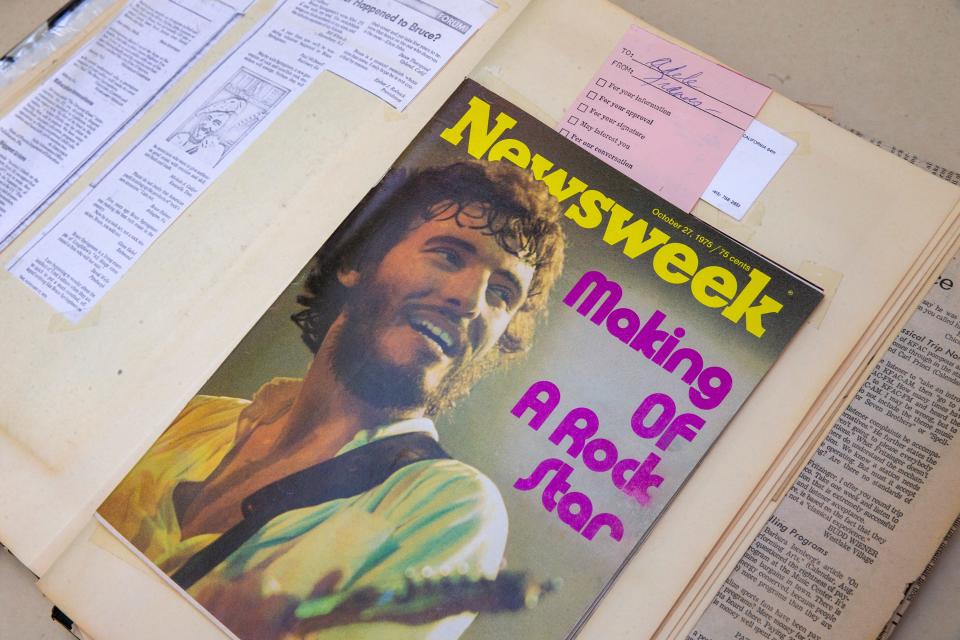
When the balcony began to sway at Gammage Auditorium
Those Springsteen concerts led to the announcement that all future rock concerts at ASU would be held at the University Activity Center, not Gammage, after damage to the auditorium during Springsteen’s three-night stand, which drew more than 8,500 fans.
According to an article in The Republic, “Officials said that during the concerts, seats were torn out of the floor and ripped, and the walls were scratched. In addition, they said, the grand tier, which is supported by a single-span box girder, began to sway as members of the audience jumped up and down.”
Events coordinator Timothy VanLeer told The Republic that jumping in the grand tier could damage the structure and conceivably hurt people, adding “The opera seats in Gammage just aren’t meant to be jumped on.”
As Adams recalls, “Looking up there, it was almost as if the balcony was moving. And I remember at the time thinking to myself, ‘Well, maybe I shouldn’t have had that second brew before the concert because this can’t be happening.’ They didn’t have a Bruce Springsteen concert in mind when they built that venue.”
Thompson Smith recalls having similar thoughts.
“It was scary,” she says. “Because people were pounding their feet and being loud in that first balcony and you could see it moving, kind of shaking. I had never seen anything like it.”
It was a thrill for Thompson Smith to see an artist she’d been playing since his first release explode the way he did with “Born to Run.”
“He was on his way,” she says. “’Born to Run’ came out and it was like, ‘Oh geez, you’ll never him in the Celebrity again.’”
Having seen Springsteen right before and then immediately after the success of “Born to Run,” Adams says they were remarkably similar performances.
“Same quality, same tightness, same intensity, same effort, same longevity, same everything,” he says. “They were the same guys. The only thing that was different was they were playing some new songs. When they got bigtime, they did not bigtime the fans.”
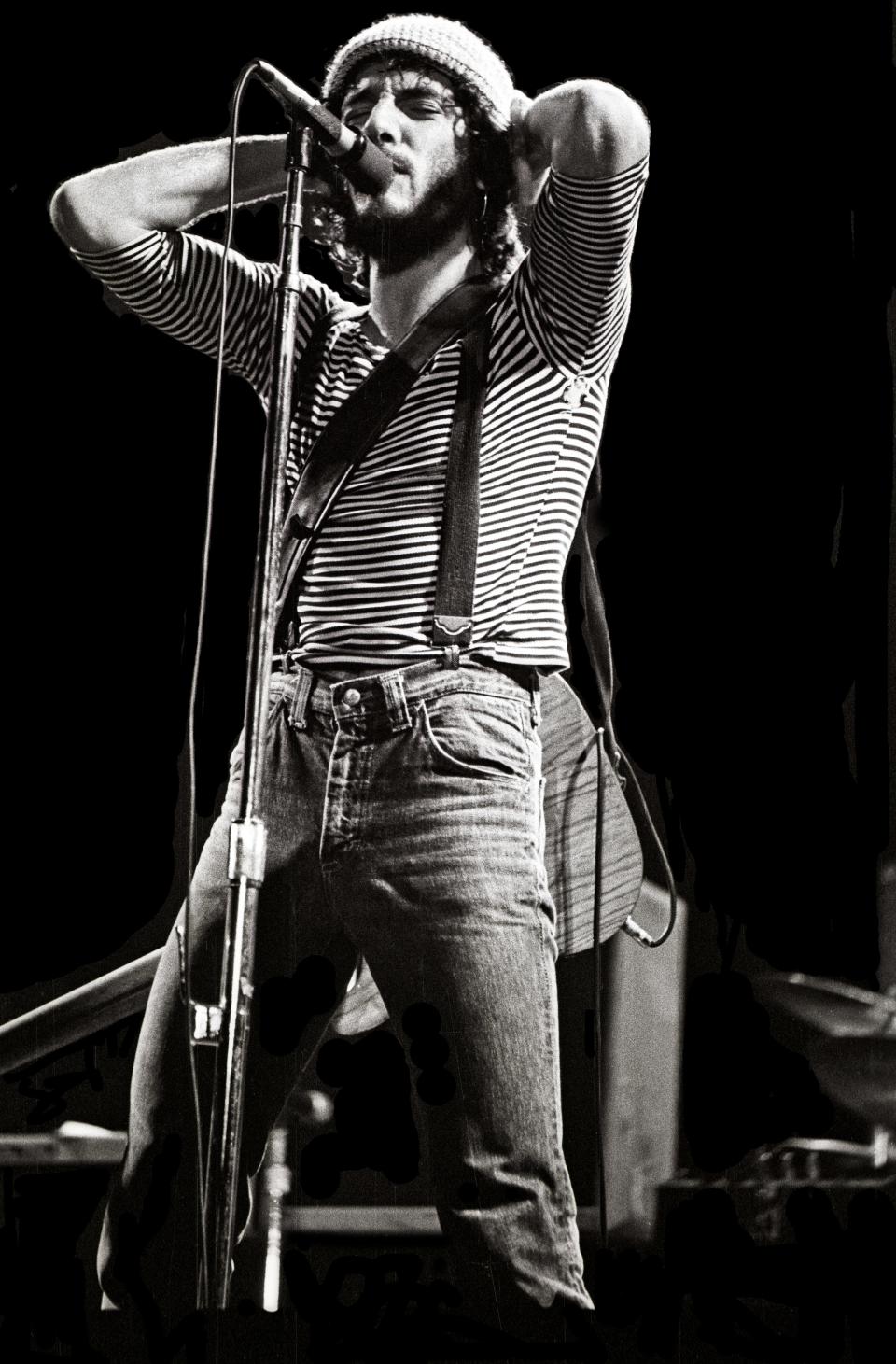
When Springsteen brought the Lawsuit Tour to Veterans Memorial Coliseum
Springsteen’s next appearance on a Phoenix stage was when he launched the Lawsuit Tour at Veterans Memorial Coliseum in Phoenix on Sunday, Sept. 26, 1976. It’s referred to as the Lawsuit Tour because Springsteen and Appel, now his former manager, had taken each other to court.
The E Street was fleshed out on that tour with a horn section billed as The Miami Horns.
Tickets for the Coliseum date were $7.
Price slammed Springsteen’s Coliseum concert.
“Bruce Springsteen’s Coliseum show Sunday night, before 6,800, pointed up Springsteen’s biggest problem in becoming an across-the-board star. His show, which pleases his cult following to no end, lacks the direction, pacing and timing needed to put him over the top. A couple of backup vocalists would help take the constant raw edge off his vocals.”
When Springsteen returned to the Coliseum on the Darkness Tour
Springsteen returned to the Coliseum on Saturday, July 8, 1978, on the Darkness Tour in support of “Darkness on the Edge of Town.”
The Republic skipped that show, much to the chagrin of John K. Hughes, a local Springsteen fan.
“A week ago, Phoenix was treated to one of the most explosive, excellent and unselfish displays of musicianship the Valley has ever witnessed,” Hughes wrote.
“Bruce Springsteen, the man who rocked down the house at Grady Gammage Auditorium, came to town and for 3½ hours rocked the socks right off the 8,000 plus fans attending. It is beyond my comprehension, then again I’ve come to expect it, how in the name of reporting, Hardy Price can write a review on the David Bromberg concert and ignore Springsteen’s show that was four times as large.”
Bob Petrie was at that second Coliseum show with a last-minute ticket.
“I got a call out of the blue from a friend of mine from college,” Petrie says. “I was going to ASU at the time. He says, ‘Hey, my date just stood me up. You want to go see Springsteen?’ So we drove down in his yellow Camaro to the Coliseum.
"And man that show went on for hours. It was just non-stop energy. And then these encores kept going and going. They were actually bringing the lights up and he comes back on and he screams, ‘I ain’t through workin’ yet’” and he went into ‘Quarter to Three,’ the Gary ‘U.S.’ Bonds song.”
Petrie says his ears were ringing as he left what he recalls as an “incredible” performance, even from his seat up in the rafters.
“I was really happy that my buddy Art’s date stood him up. I mean, I wasn’t happy for that, but I was happy that I got to go to the show for free. I couldn’t afford to go concerts at the Coliseum. I don’t know what the tickets were. It had to be at least 10 bucks. I don’t know who his date was, but she missed a good show.”
Desiree Komar McDonald was 17 and didn’t know much more than Springsteen’s great hits until her boyfriend took her to that second Coliseum concert.
“I wasn’t the hugest Springsteen fan,” she says. “But I got there and it was probably one of the longest concerts ever, which that in itself was amazing. And everybody had so much energy. You had Clarence Clemons, this huge linebacker kind of guy, bouncing around on stage in his colorful suit. And Little Steven, everybody. I had been to so many concerts by then and it was one of the most super-energetic concerts I have ever seen. And Springsteen had his own sound, this, I don’t know, blue-collar music.”
She came away from the experience a true believer.
“Of course, my boyfriend went out and got the 8-tracks of ‘Born to Run’ and ‘Darkness on the Edge of Town’,” she says. “We went to Disneyland later that summer and played them straight, just one after the other, the whole way there.”
That Coliseum date was Springsteen’s eighth and final Phoenix concert of the ’70s, a decade he defined as much as any artist of his generation.
Springsteen only played two Valley concerts in the ‘80s but came here four times in the ‘90s. His concert with the E Street Band at Footprint Center in downtown Phoenix on Tuesday, March 19, will be his seventh metro Phoenix date since the turn of this century.
Bruce Springsteen & the E Street Band in Phoenix
When: 7:30 p.m. Tuesday, March 19.
Where: Footprint Center, 201 E. Jefferson St., Phoenix.
Admission: Verified resale tickets are available at ticketmaster.com.
Details: 602-379-7800, ticketmaster.com.
Reach the reporter at ed.masley@arizonarepublic.com or 602-444-4495. Follow him on Twitter @EdMasley.
Support local journalism. Subscribe to azcentral.com today.
This article originally appeared on Arizona Republic: Bruce Springsteen was huge in Phoenix before he was famous. Here's why

